INTRO:
By the time of this game, there had been plenty of MMOs. There are even stories that take place in MMOs, and games that are built on these stories. CrossCode is one of the latter.
PREMISE:
The game is set in a far-flung future, in which humanity has spread to the stars. Much of the game is not actually good at pointing this out though. Ultimately, this plot element is not really important since most of the game takes place in a continent on a planet that is certainly not Earth.
Said planet is where practically sci-fi “nanomachines” can be found; they are called “Instant Matter” in this game. Instant Matter is implied to be native to this planet, though humanity has since learned to create it elsewhere. Although the constructs that are made with Instant Matter are not useful for much of anything practical, they are, for whatever reason, perfect literal building blocks for an MMO with a physical presence.
The game world for this MMO – called “CrossWorld” – has been built into a continent on the planet itself; flora and even fauna have been emulated (using Instant Matter) and put into it. As for the people who would play this MMO, they take possession of personae that are made with Instant Matter too; these are fittingly called “Avatars”. Incidentally, the technology that makes this possible is the eponymous CrosscCode.
Lea is seemingly one of these players. She wakes up on a ship that is heading towards said continent. She is informed that her real self has a serious case of amnesia, though prior to that she had been playing the MMO. Replaying the MMO with a fresh Avatar would be her chance at regaining her memories, but she would have to be illegally inserted into the game world. Furthermore, Lea cannot speak, due to her Avatar’s malfunctioning voice module.
Of course, everything that has been mentioned would not match what actually happens next. There are quite a number of plot twists. There is some foreshadowing, but only if the player has Lea talking to inconsequential NPCs.
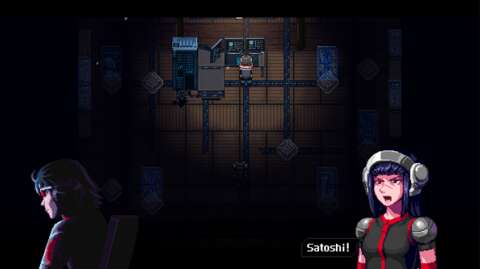
PROLOGUE:
Prior to the actual start of the game, the player takes control of a certain other character, who is striving against some other unseen characters. This player character represents the pinnacle of combat power that the actual player character can achieve.
It is an intriguing start, but it is not an actual tutorial. Rather, the player is given on-screen prompts about very simple controls with no context of what these would actually do; instead, the player character blasts out very powerful moves that wipes out just about any on-screen enemy – most of whom are woefully underpowered against the player character.
In other words, the prologue is mainly meant to be a “power trip” scenario.
CONTROLS – OVERVIEW:
Anyway, Lea is the player’s player character throughout almost all of the game. As such, the player would want to get familiar with the control inputs as soon as possible. Fortunately, most of them are easy to learn. Despite what is mentioned in the intro splashes for the game, the game is perfectly playable with the keyboard and mouse.
AIMING:
Lea can throw ranged projectiles without aiming, but most of these will miss. However, if she aims before that, the projectiles that are launched will follow reliable trajectories.
For this purpose, there is the aiming feature, which shows the trajectories that the projectiles would follow when they are thrown after having been aimed. The player will be using this a lot, so thankfully it is aided by conveniences such as a camera that pans in directions that the player would appreciate in situations where aiming is necessary.
For example, if there is a puzzle that requires Lea to fire off projectiles to hit something that is almost one screen away, the camera will pan one screen while the trajectories are drawn.
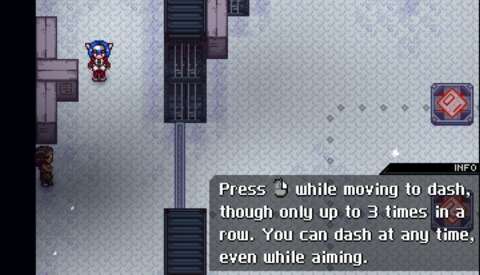
AUTO-JUMPING:
For better or worse, there are platforming segments where Lea must jump from one platform to another. There is no control input that is dedicated for jumping; for players who are veterans of platforming games, this might seem like an alarming omission.
That said, the developers approached this matter by implementing an auto-jumping script; Lea automatically jumps off a ledge just before she walks off it. There are actually more conditions for this script that can be observed. For example, if the ledge is part of a series of ledges that are intended to act like stairs, she won’t jump off them if the player has her moving in the direction of descent down those stairs.
Although the jumps are made automatically, the player has control over Lea’s mid-air momentum via the control inputs for directional movement. This will be needed for pin-point jumps, which will be described later.
GUARDING:
Lea can bring up a shield to block incoming attacks, though not all attacks can be blocked; attacks that look too massive or that come from above tend to overwhelm the shield. Furthermore, not all of the damage from blocked attacks can be shrugged off, and the shield will eventually shatter from taking too much damage.
However, perfectly timing a guard in time with the landing of an attack will nullify all of the damage. Furthermore, if Lea has the necessary nodes in her power circuits active (more on circuits later), the perfect block also restores some of the health.
MELEE ATTACKS & PARRYING:
In addition to firing off balls of energy, Lea can perform melee attacks (though she does look like she is battering enemies with the same balls). The melee attacks can hit multiple enemies at once, which is handy because there are certain types of enemies that resort to mobbing Lea. Certain other types of enemies also happen to be particularly vulnerable to melee attacks, especially those that charge up attacks.
If Lea makes a melee attack against an enemy just before the latter lands a melee attack on her, Lea parries the latter’s attack. This destabilizes the enemy, getting them closer to being broken. (There will be more on stability and breaking later.) In practice, parrying is a significant risk versus reward gameplay element; it is not necessary to defeat enemies with.
DASHES:
Lea can dash away from enemies in order to avoid incoming attacks. These grant her some invincibility frames, which usually execute when she begins the dashing animations. Although the dash seems to be a fast method of movement, there is a noticeable delay between consecutive dashes. Furthermore, there is a hidden meter that tracks the number of dashes available before the player has to wait for the opportunities to dash to be restored.
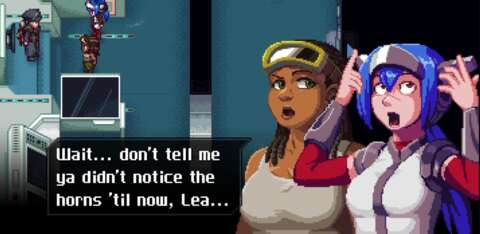
HEALTH:
Although Lea has a physical form, it is a tireless thing that is not stymied by accumulated damage. In other words, the trope of “Critical Existence Failure” applies here.
Lea’s health pool grows gradually with just about any power increment that she gets. Interestingly, the pool’s actual amount also depends on the elemental mode that she is currently using; there will be more on elemental modes later. Switching between modes depends on the percentage of health that she has remaining; the actual amounts of health are readjusted according to said percentage.
HEALING:
Outside of combat, Avatars like Lea heal rapidly. During combat, this automatic healing is disabled; healing can only be done through a few means, one of which is using healing items.
Speaking of which, healing items – which take on the form of food that has to be eaten – heal according to percentages. Eating them happens to take time; the ones that heal more take noticeably longer. The longest of these still happens in mere moments, so the player could still attempt to have Lea take a bite when enemies have been temporarily driven back.
STATISTICS:
Whatever that Lea can do has its effectiveness determined by statistics that are not readily visible, this is in addition to the player’s own skill. For example, the “Focus” statistic determines how quickly Lea can aim her projectiles and how many invincibility frames that she gets when dashing.
Gaining levels increases some of these statistics. These statistics are also affected by the gear that she is equipped with. Indeed, switching gear in and out will be the player’s main means of maintaining her competitiveness in combat. For example, statistics like “Pin Body” (which hurts enemies that hit Lea in melee) are not granted by level-ups.
EXPERIENCE POINTS AND LEVELLING:
Being a player character in what is an MMO, Lea can accumulate experience points (XP) and gain levels. XP is granted by the completion of quests, though killing enemies also yield XP. However, in the case of the latter source, the amounts that are obtained depend on the difference between Lea’s level and the enemies’; being higher in level grants Lea less XP. Defeating higher-level enemies will grant more, but generally it is not a good idea to do so.
Gaining a level grants increments in some statistics. These are not a lot, however; as mentioned already, swapping gear for better ones is a more reliable means of increasing Lea’s power.
“GP” AND CRAFTING RESOURCES:
GP is the currency that is used in CrossWorld to make purchases and trades from the NPC vendors. It is obtained in considerable amounts through the completion of quests, but defeating enemies also yields it. It is never in limited supply, so the player could eventually accumulate enough for any transaction, if the player has the patience to do so.
Crafting resources – which are needed for the trade offers from NPC vendors – are trickier to get. They are obtained from destroying plants and killing enemies, but the probabilities of them dropping things that the player wants are rarely if not never a certain 100%. However, there are means of raising those probabilities, as will be described later.
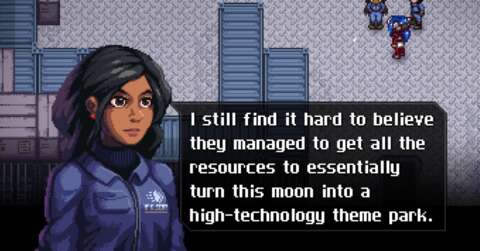
CONSUMABLES:
Healing items have been described earlier. There are other consumables – which also appear as food – that can give buffs like increased defence or resistance to elements. They have to be eaten too; typically, the more powerful of these consumables take time to be consumed.
These consumables and healing items are not found as loot drops from enemies. They are either found as loot from treasure chests, or purchased from vendors. In the case of the latter, most vendors sell the lowest tier of consumables (though these are the fastest to consume).
Incidentally, the presence of these in treasure chests are often a hint of what the player can expect in quest-scripted fights that might happen in the vicinity of the chests.
CIRCUITS – OVERVIEW:
As part of CrossWorld’s MMO gameplay, Avatars like Lea has access to abilities that are flashy and have an effect on anything else that is made of Instant Matter. These include the “Elements”, which are modes that Avatars like Lea can switch back and forth as they deem appropriate for their current situation. The modes are mainly meant for combat, but they are also used to overcome some platforming challenges and puzzles.
GETTING CIRCUITS UNLOCKED:
The development of these elemental powers is represented as tree nodes, known in-game as circuits. Initially, only the central circuit is unlocked; this is Lea’s neutral mode. The other modes are unlocked as Lea completes the challenges at the various temples in CrossWorld. These are mandatory gameplay sequences, i.e. the player needs all of them in order to progress.
CIRCUIT POINTS:
When Lea gains levels, she does not just gain increments to her statistics. She also gains “Circuit Points” (CPs). These are used to unlock nodes in the aforementioned circuits, thus giving her additional capabilities or more statistical increments. Typically, nodes that are further away, i.e. closer to the dead-ends of the branches, are more expensive to unlock.
The aforementioned capabilities and – more importantly – stat increments are only active when Lea has switched over to the pertinent modes. In the case of stat increments that affect health, her amount of actual health will change in order to fit the results of the statistical calculations. Thus, switching modes while being attacked carries considerable risk.
When Lea unlocks an additional circuit, she also gains a commensurate number of CPs for that circuit in order to make it competitive relative to the other circuits that had been unlocked earlier.
CIRCUIT OVERLOAD:
Lea cannot maintain the use of a mode indefinitely. Making attacks with any mode other than neutral will accumulate strain, which is represented as a gradual filling of the icon that represents the current mode. When the icon is completely filled, “Circuit Overload” occurs and Lea is forced back into neutral mode. As mentioned earlier, the neutral mode is the weakest of the modes, so having this happen during a fight is generally not a good thing.
If it does happen, the overload will eventually go away, though Lea cannot switch to any other mode until the strain completely ebbs. Fortunately, there is no other setback to having overloaded.
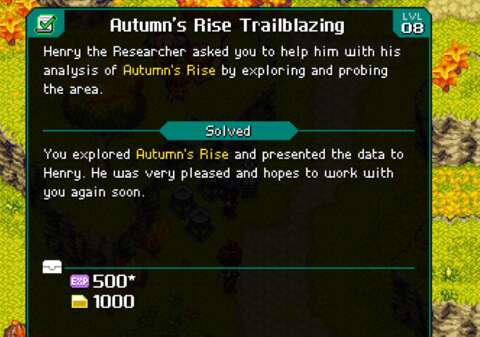
ELEMENTS – OVERVIEW:
The player will be using the elemental modes a lot throughout the game for both combat and platforming. The actual gameplay designs of the elemental modes are as follows:
NEUTRAL MODE:
As mentioned already, this is the initial mode, and it is the weakest. Its circuit has the fewest number of nodes, and their effects do not seem as potent as those of the nodes in other circuits. Furthermore, there are very few enemies that happen to be vulnerable to the attacks that can be made with the neutral mode.
Nevertheless, the player would be using the neutral mode quite frequently early on in the game, if only because the circuits are underdeveloped at the time. Furthermore, switching to Neutral mode is the only other way to clear circuit load.
COLD MODE:
The power of frost is the first of the circuits to be unlocked, and it will be useful throughout much of the game, especially in combat. In particular, all of the attacks from this mode accumulates progress towards inflicting the “Frozen” de-buff on enemies; certain attacks can inflict this de-buff outright.
Frozen enemies have significantly slower movement and attack animations, so this can give the player considerable breathing room during fights. However, not every enemy can be afflicted with the de-buff.
FIRE MODE:
The fire mode is unlocked next. As its name suggests, it is meant to set things on fire or melt them. On enemies that are not resistant to fire, attacks made with the fire mode inflict a damage-over-time de-buff. In the case of certain enemies, the de-buff also changes their behaviour, e.g. making them more aggressive but also making them more vulnerable to certain other attacks.
WAVE MODE:
The wave mode is one of the two modes that occur later in the game. The player can choose to go after the other mode first, but the wave mode is a better choice because it enables platforming options that the other mode does not offer.
That said, the normal attacks of the wave mode are mainly meant for platforming and puzzle-solving challenges. In particular, the aimed shots of the mode can hit what appear to be green rifts, after which Lea and her party immediately disappear and then reappear at the rift that was hit. The normal attacks otherwise do nothing more than inflicting additional damage on enemies that are vulnerable to the wave element.
The Arts for the wave mode are a different matter. Alone among the modes, the Wave mode has Combat Arts that have the potential to heal Lea. For example, its Throw Arts will drain health from enemies and give it to Lea.
(There will be more on combat arts later.)
ELECTRICITY MODE:
The electricity mode is meant to be used against mechanical enemies and those that are affiliated with the wave element. That said, against any enemy except those that have an affinity with electricity, hits from the electricity mode will accumulate progress towards inflicting the “Shocked” de-buff. Enemies that are shocked become a bit slower, take small damage over time and may also change in behaviour, especially in the case of the mechanical ones.
There are some puzzle or platforming elements that require normal attacks from the Electricity mode, though there are not many of these.
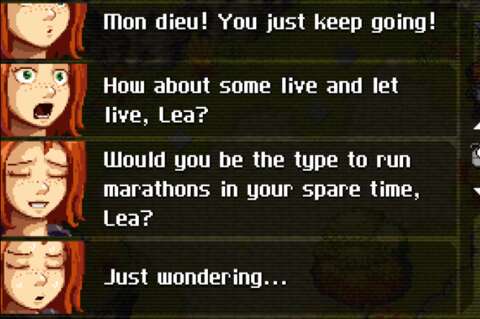
COMBAT ARTS – OVERVIEW:
The circuits have nodes that unlock the use of “Combat Arts”. These are special attacks that generally inflict more damage than regular attacks, while also imparting de-buffs. The animations are also flashier. However, there are quite a number of limitations that prevent the player from using them willy-nilly.
SKILL POINTS:
The first of these limitations are skill points (SPs). Lea has to accumulate these by engaging in combat, with successive hits without being hit in return increasing the rate of accumulation. There is a maximum number of SPs that can be accumulated, however, so the player will want to spend them where there is a risk of wasting surplus SPs.
Outside of battle, SPs degrade; the progress for the degradation of each SP is shown as bars of diminishing length. Getting into combat stops the degradation, so it is possible for the player to chain multiple fights together, if Lea and friends have the endurance for that.
There are consumables that can accelerate the accumulation of SPs, but these do not delay their degradation outside of combat.
COMMITTING TO THE ART:
Unlike the regular moves that Lea can do, combat arts will require the player to commit Lea to their animations. Incidentally, Combat Arts have elaborate animations, which might render Lea vulnerable. For example, the neutral mode has a combat art that has her conjuring a hacksaw for almost two seconds; during this time, she is vulnerable to attack. The higher tier Arts have animations that are even more elaborate.
CONTROL INPUT COMBINATIONS:
For better or worse, Combat Arts cannot be performed with a single press of a button; there are no means to bind dedicated control inputs to them either. Rather, in the case of the keyboard and mouse set-up, the player has to make the control inputs for regular moves first, followed by a control input that is dedicated to the use of SPs.
The window for the recognition of the control input combo is generous though. Thus, it is still possible for a player to practice and eventually shorten the combo to a split second.
TYPES OF COMBAT ARTS:
There are four types of combat arts, each corresponding to the major regular moves that Lea can make. There are Melee, Dash, Throw and Guard arts. For example, pulling off a melee art involves simultaneously entering the control input for melee attacks and the control input for spending SPs. If the player gets the combo right, the screen pulses just before Lea enters the animation for the combat art.
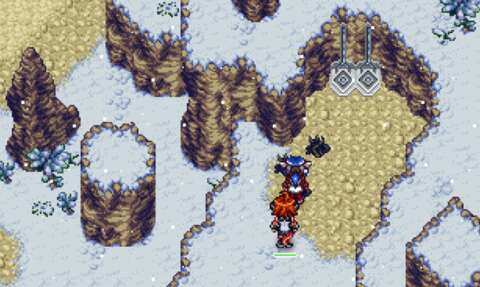
HIGHER TIER COMBAT ARTS:
The circuits have branches that eventually lead to combat arts that are of higher tiers. For example, the Throw Arts for the Fire mode has Lea conjuring a torrent of fire at the lowest tier; the next tier has her leaping into the air before firing off a beam of blazing energy.
Higher-tier combat arts can only be available for use together with the lower-tier arts that are associated with them. Returning to the earlier example, Lea can only fire a beam of energy if the means of conjuring a torrent of fire is made available. If she swaps to a different low-tier art in the Fire circuit, she also loses the ability to fire the beam of energy; there will be more on swapping Combat Arts shortly.
SWAPPING BRANCHES:
There are more Combat Arts than there are control input combos, and there is more than one set of Combat Arts for each combo of control inputs. Thus, the player has to choose which set to use at any one time. The player can only do this outside of combat too; since bringing up the status screens is not doable during combat, the player cannot swap sets of Combat Arts during combat too.
The silver lining here is that when a player unlocks nodes that are part of the branches that represent Combat Arts, the player also unlocks any nodes that are on the parallel branch. In other words, the player would be spending CPs to unlock not one, but two nodes.
TEMPLES – OVERVIEW:
The temples from which Lea and other Avatars gain their circuits are perhaps the most wonderful parts of the gameplay. These are carefully tailored scenarios, intended to teach the player into learning about the things that can be affected by the elemental modes. Among the parts of the gameplay, these are the most palatable ones.
ELEMENTAL ORBS:
The elemental orbs are the earliest elements in the puzzles posed by any temple. These convert any ball – aimed or otherwise – that Lea throws at them into the element of the same type as the orbs. These orbs generally appear only in the temples, though certain fights have the orbs appearing; this is typically a hint to the player that certain elements are needed against the enemies that are encountered.
KEY-LOCKED BARRIERS:
There are energy barriers that prevent movement through them. These barriers have segments that appear to have keyholes on them. These are meant to be hit with balls that are fired from positions where there are plates with key symbols on them. Furthermore, Lea needs to have collected actual keys before the plates can infuse the balls that she can throw.
The puzzles that are associated with these barriers often require the player to hurl balls that can rebound off surfaces towards the aforementioned segments. Certain puzzles add more complications, such as needing to hit and activate more than one segment on different sides of the barrier.
CONVEYORS:
Some temples have conveyance systems, which pose the challenge of jumping from one moving platform to another. In the case of these, the player has to keep in mind that Lea does not retain any momentum from a moving platform that she was on earlier.
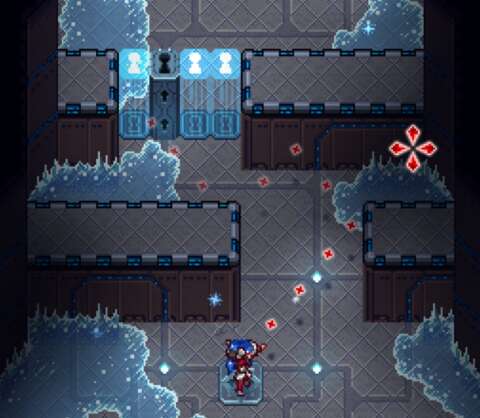
COMMON OBSTACLES - OVERVIEW:
The following sections are for obstacles that can not only be found in temples, but also elsewhere.
SWITCHES:
The most common platforming-related objects are switches. There are two types of switches.
The first type is a one-time-only thing that will disappear as soon as they are hit. Whatever that they activate (or de-activate) remain so permanently.
The other type has temporary effects; whatever that they control will eventually revert to its original state after being activated, and the switch will return to its previous state too. This switch is represented as a tetrahedron that spins in place while the switch is active.
BARRIERS:
In addition to (seemingly) natural obstacles, there are shimmering barriers that prevent Lea and friends from moving through them. (The player may see other Avatars moving through them; apparently, these barriers are “instanced” for Lea.)
Most of the barriers are meant to be eventually lowered via the use of switches. The links between the barriers and the switches are depicted with notches on the ground, though in some cases these notches have faded.
That said, Lea has to do some platforming to reach the switches, or otherwise hit them with aimed and/or rebounded shots. The effect is usually permanent. Sometimes, especially in the case of the challenges in the temples, the barriers are lowered as soon as Lea has reached certain spots.
MOVABLE BLOCKS & PLATE SWITCHES:
There are some things that resemble cargo containers, though they have square bases. When Lea is next to a block, a prompt to grab it appears over the block. She can the drag the block around, but only according to the player’s directional control input. Usually, the player would have them arranged to create platforms that Lea can land on.
There are plate switches that can only be activated by dragging blocks onto them. These mostly occur in the Temples. Conveniently, the blocks are partially lowered when this happens, so as to make a convenient stepping stone.
CHASMS & SPRING BOARDS:
There are chasms across CrossWorld. The Temples, in particular, have a lot of them. They are generally meant to be impassable; any creature that falls into them immediately reforms somewhere close by, albeit with some damage inflicted on them.
However, in the case of an elaborate series of jumps, an Avatar might reform at the start of the series of jumps. This can be frustrating, in the case of areas with significant jumping puzzles.
Some chasms are meant to be traversed with the use of launch boards. These appear at the edges of the chasms. Some of these are initially deactivated; getting them online usually involves a platforming challenge.
Unlike regular jumps, jump made with launch boards do not give the player any control over Lea’s momentum. She will not fall into the chasms in any way during such jumps either.
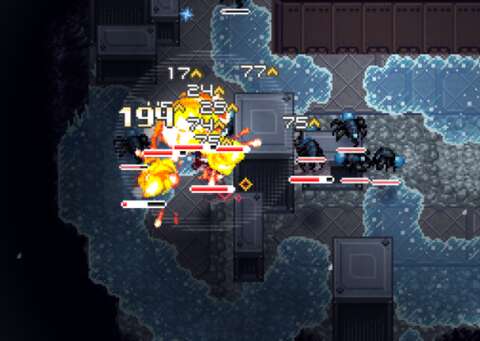
FINDING HIDDEN TREASURES – OVERVIEW:
Not unlike the Legend of Zelda titles that have influenced so many indie titles like this one, there are treasure chests that are littered all over the game world. A few are easy to reach, but most require considerable effort – as well as patience, because this part of the gameplay especially highlights the problems with the level designs and visuals of the game.
TREASURE CHESTS:
Most treasure chests are in plain sight, though getting to them will involve a lot of round-about exploration; one of the NPCs that appear early in the game will mention this.
Some others are well out of the way, requiring the player to look for ways off the proverbial beaten path before coming across the chests. Usually, there are some indicators of the presence of these ways, the most notable being the presence of plants that cannot be readily hit with projectiles from anywhere close by.
Only a few chests are actually visually obscured, making use of the fixed camera to place them out of sight. These ones are the least amusing to find.
VAGUE VISUALS FOR VERTICALITY:
Games with 2D graphics that try to have verticality in their gameplay can fail miserably if there are no reliable means of discerning height differences. Unfortunately, CrossCode is one of these games.
Although there are ledges and other obvious indicators of height differences, the heights of other things like pillars and poles can be difficult to compare if their bases are not visible. Although mandatory gameplay sequences generally do not have these troublesome level features, optional challenges like the chest hunts have a lot of these.
PLENTY OF PIN-POINT JUMPS:
For better or worse, there are plenty of precarious jumps that have to be made to reach certain treasure chests. These jumps have to be made across small spots; the player can expect party members to be pushed off by Lea (who has priority over anyone else in the matter of collision detection). If not for the decent air control for jumps, these sequences can be very frustrating.
LIMITED RANGE OF BALLS:
The treasure chest hunts will also reveal that the balls that Lea can throw will not hit anything that is off-screen; they simply pass through anything that might be otherwise hit. The only exception is that they do bounce off walls, but if they are still off-screen, they will not hit anything. The balls also de-spawn if they have travelled a total of one-and-a-half screens of distance.
This means that the player must have obstacles and other platforming elements within view if the player intends to aim shots to hit switches. Outside of chest hunts, this range limitation is generally not an issue.
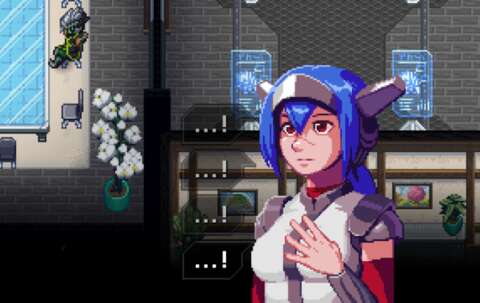
COMBAT RANK & LOOT DROPS:
Enemies that have been defeated may or may not drop loot. To partially address this issue of fickleness, there is the mechanism of “combat rank”. Combat rank is practically a meter that counts the number of enemies that have been defeated while Lea and friends are engaged in combat.
The combat rank starts at C; it rises to B and then A as Lea and friends accumulate knock-outs. Every increment requires a threshold of a number of kills to be breached. However, taking damage sets the player back, though the combat rank can never revert to a lower rank.
That said, the rank determines the probability of loot drops from defeated enemies, as well as the types and amounts that may be yielded. Generally, a higher combat rank is better, but keeping it will require the consumption of healing items in order to maintain Lea’s durability.
If the party is not being engaged or pursued by any enemy, a countdown bar appears. This bar shrinks in several seconds; if it disappears, the combat rank that has been accumulated will dissipate. However, when that happens, the game also automatically calculates the XP and GP that have been yielded from defeated enemies and applies bonuses based on the combat rank that has been attained.
SMASHING PLANTS, ROCKS, CRYSTALS AND FUNGI:
Although CrossWorld is a physical environment, many things in it are not natural. This includes most of the bizarre plants in the different biomes of CrossWorld, as well as the mineral formations that are above ground. (These things are of course made from Instant Matter.)
There is a long-term quest that Lea can undertake. This involves the destruction of the aforementioned things, despite the quest having been commissioned by an NPC that is a horticulturalist.
That said, the actual progress of the quest is represented by an almanac that fills up as Lea smashes more examples of specific types of plants, fungi and minerals. The details that are filled in include the usual whereabouts of these things and what they might yield when destroyed.
If the player is lucky, the things that are destroyed might yield stuff, but the player has little control over this. However, rarer things are guaranteed to yield loot. For example, the most florid variant of a plant species will yield stuff, but they are often located at spots that require aimed shots and rebounds to hit them.
Generally, there is no means of altering the probability of loot drops from these destructible objects. However, the rewards of the aforementioned quest include a piece of headwear that changes that probability according to the player’s combat rank. The efficacy of the headwear can be improved by completely documenting the plants, fungi and minerals within a region. Of course, going after plants and rocks in the middle of a fight might not be wise.
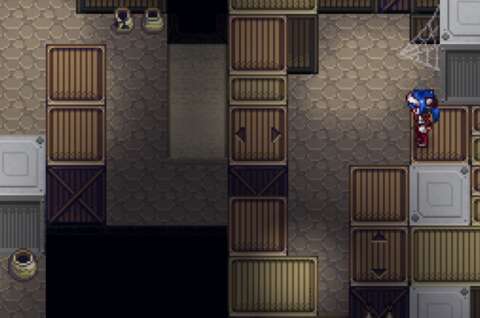
PARTY OF THREE – OVERVIEW:
Lea is not alone in her adventures in CrossWorld. There are other players too. She makes friends with one of them early on, despite her lack of reliable speech. Eventually, she comes across more, including people from a small guild.
INVITES AND REMOVALS:
Curiously, only Lea is ever shown to be a party leader in the story; her friends rarely if not never invite Lea to be a party member. Furthermore, when they are in the party, they are coded to always stick close to Lea; they will never wander off, unless scripted to do so according to the story. Likewise, it is simple to remove them from the party, and even invite them back in.
In other words, the player should not expect them to respond to such whimsies like real actual humans would in MMOs.
COMRADES AND MEAT-SHIELDS:
The main purpose of Lea’s friends in the gameplay is to divide the attention of enemies as well as increase the overall firepower that can be levelled against them. That said, they will make their own decisions without the player being able to provide any input; apparently, that Lea lacks reliable speech and that CrossWorld has long dropped its text messaging feature are the excuses for this design omission.
Fortunately, members of the same party clip past each other; their attacks also go past each other too. Therefore, they will never be in each other’s way.
The same does not apply for enemy attacks that are not homing projectiles. Such attacks on a party member can be intercepted – often unwittingly – by any other party member.
Furthermore, enemies change their aggro targets readily, often to the nearest party member. Thus, it is possible for the player to have Lea hang back and have her friends take the heat from enemies.
EXPERIENCE GAINS AMONG PARTY MEMBERS:
The other party members gain XP as Lea does. Their combat capabilities will noticeably expand according to the Circuits of their chosen character class as they gain levels. If the player has not been including them in the party, they would have their levels bumped up to a minimum as the story progresses. Having their levels be competitively equal to Lea’s is not a necessity, however; the reason for this will be elaborated later.
PARTY MEMBER GEAR:
Fortunately, CrossCode does not implement any means of tracking the resources, materials and gear that party members have gathered; this would have been a source of tedium. However, they do have their own sets of gear that do happen to affect their combat performance.
Every five levels, opportunities to upgrade their gear become available; these opportunities are not indicated to the player in any way in-game, however. Fortunately, upgrading their gear is simple; the player only needs to bring up the trading screen of any vendor NPC, and then exit it. One of the party members will exclaim about having changed their gear.
However, only one party member does this at any time. To get the other party member to swap their gear, the player needs to go to another location in CrossWorld and meet a different NPC vendor there. Alternatively, the player can drop this party member and re-invite him/her on the spot before meeting the same NPC vendor again.
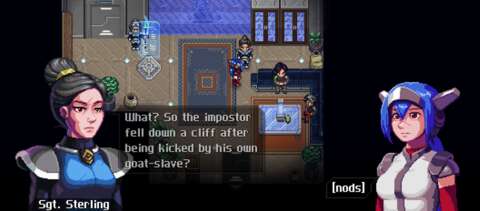
PARTY MEMBERS GETTING KNOCKED OUT:
Party members will try to keep their health up by using Wave mode Arts or otherwise consuming healing items. However, they can have their health reduced to zero, after which they exclaim about being knocked out. They will eventually return nearby with full health, but this can take a while.
LEA GETTING KNOCKED-OUT:
Despite the presence of a respawning mechanism in CrossWorld that should be applicable to Lea, getting Lea knocked-out will revert the player’s progress to the most recent auto-save. In other words, the player must win fights without having Lea being knocked out in order to make any progress.
INSTANCING:
For better or worse, CrossWorld – and thus CrossCode – has a lot of instancing measures. The reason for this is the same excuse that is used in MMOs that do instancing; the challenges are meant for individual players. Many quests in underground or indoor places, and all of the Temples, will enforce instancing because they were apparently made with one player in mind. Many of the story-related moments will require Lea to drop all party members too.
Thus, the player should not expect Lea to be accompanied by someone else throughout the entire game.
Furthermore, considering the platforming gameplay, there is a lost opportunity to have some scenarios that provide a semblance of co-operative platforming. Of course, CrossCode is ultimately a single-player game, despite having the premise of being set in an MMO.
ENEMIES – OVERVIEW:
The bulk of the enemies in the game are just as artificial as the Avatars; one of the main characters in the game would observe out loud about their lack of believability. That said, they are meant to challenge the Avatars, and there are often more of them than there are Avatars.
JUST LOITERING AROUND:
Not unlike the critters in MMOs (or most other games for that matter), most of the critters in CrossWorld are just loitering around. Some other critters would attack the Avatars as the latter pass by, but these are, perhaps fortunately, rare.
Attacking them triggers a hostile response from them. Generally, attacking any individual in a group of the same species would elicit a response from the entire group. For example, groups of rabbits will respond in their entirety whenever one of them is transgressed against.
There are critters that only ever respond as individuals, which make them easier to deal with. For example, the other electrified cats in Gaia’s Garden will not respond if a nearby cat is attacked.
ENEMIES IN QUEST-RELATED FIGHTS:
Many fights will require Lea to fight and defeat enemies that appear; typically, these enemies are critters that are endemic to the region, albeit inherently hostile to the player character. Such fights often have the player character trapped within a boundary, as depicted by energy fences that are raised whenever the player character moves onto an area that triggers them.
Unlike most fights that happen elsewhere in the region, the player would be pitted against mixtures of enemies. Some mixtures can be troublesome to deal with. However, none of these enemies will coordinate their attacks with each other, so defeating them is a matter of watching for lulls in their attack patterns.
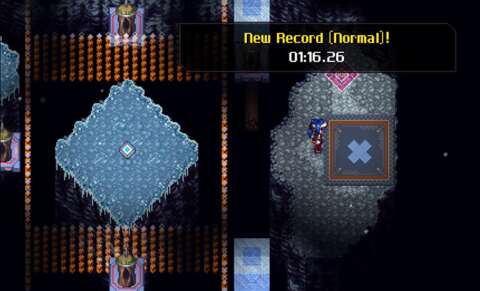
ELEMENTAL WEAKNESSES:
Most fights can be resolved much quicker by making use of the vulnerabilities that enemies have to certain elements. However, this does not always go entirely in the player’s favour, due to the diametric opposition of elements to each other.
To elaborate, an enemy might be vulnerable to attacks of a certain element. However, this enemy tends to have attacks that are of the opposing element. Therefore, by adopting the mode of the element that the enemy is vulnerable to, an Avatar also becomes vulnerable to that enemy’s attacks. Of course, the player can work around this setback by dodging more often than guarding.
BREAKING:
Most enemies have meters that depict how much strain that they are taking from Avatars’ attacks. If this meter fills up completely, they change their behaviour.
For most enemies, this means that they “break”. If they are broken, they are stunned for a considerable amount of time, during which most of their damage-reducing stats are waived. This means that they are easier to kill. Indeed, breaking enemies is the fastest though not always reliable means of eliminating them.
For some enemies, having the meter filled has them switching to a different pattern of behaviour. For example, the floating anglerfish in Gaia’s Garden usually hangs back to emit sonic waves at Avatars. They will flee if the Avatars get close. However, if the Avatars hit them with enough ranged attacks to fill their meter, they try to get close to emit stronger sonic screams instead. If any Avatar hits them with a melee attack while they are in this state, they break immediately.
BOSS FIGHTS:
The boss fights in this game are particularly tailored scenarios, perhaps more so than boss fights in most other indie games that I have experienced.
As to be expected, boss fights involve enemies that are unique. Some of them are of the same species as the critters that are endemic to the regions that they reside in, but they have differences in their aesthetics that mark them out.
These bosses have their health meters shown at the bottom of the screen; so far, so familiar. There are notches in these meters; the notches indicate the moments when the boss fights advance to the next phase.
Typically, in the next phase, the boss gains additional attacks; the phase change is almost always followed by these attacks. Some bosses may do other things, like interacting with things in the vicinity.
However, the change in phases generally does not alter their statistics. For one, bosses retain their vulnerabilities to specific elements.
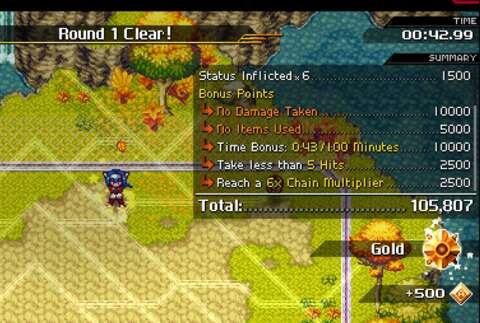
VENDORS AND TRADERS:
At specific locations in CrossWorld, there are places where NPCs congregate. Some of these are sellers of equipment and consumables. Their offerings are usually standard-fare stuff. The equipment vendors, in particular, sell gear that does not have much in the way of statistics.
Excepting treasure finds, consumables and equipment that are of higher grades are only available through “trade” options from trader NPCs. These trades require the player to accumulate materials; in the case of certain pieces of gear, the player also needs to have prerequisite gear. The player then hands over these – together with a considerable commissioner’s fee – to the trader NPCs to get the desired item.
For better or worse, if the player wants Lea to be packing gear that are more than competitive, the player will need to go around CrossWorld accumulating the materials that are needed for the equipment trades. As mentioned earlier, loot drops are not guaranteed, so the player could be wandering more than he/she would like.
VISUAL DESIGNS:
As is obvious from the get-go, the game makes use of an artstyle that is reminiscent of the SNES era. Plenty of other indie titles have done this by the time of this game, and CrossCode indeed struggles to stand out. The aforementioned problem of sometimes ambiguous verticality makes this more difficult.
Sprites of characters usually do not sport much of any animation outside of combat. There are some scenes where they do get more distinct frames, though Lea gets the most of these.
Conversations involve the use of half-body portraiture. For most characters, the only variation that the player would see are in their faces. Some, like Lea, have much more variation than the others. Lea, in particular, even have frames of animations for some expressions. Some characters, such as the NPCs in CrossWorld and most other players, do not even have any variation at all.
Curiously, the other players of CrossWorld that are not important to the story are depicted with greyed-out portraits. These are likely generic assets that have not been replaced with artwork that are more unique.
Many non-Avatar creatures have been designed to be references to other video games. Even if their looks do not immediately suggest the references, what they do in combat would make this quite clear. For example, there are the “Hedgehags”, which do resemble real-life hedgehogs, at least until they perform their spinning dashes. Perhaps the most amusing – and the most egregious – are the bosses in optional quests.
Combat involves a lot of particle effects. If enemies and bosses are not the ones emitting these, it would be Lea and Avatars with high-tier Combat Arts. The latter are particularly flashy, often involving camera zooms too.
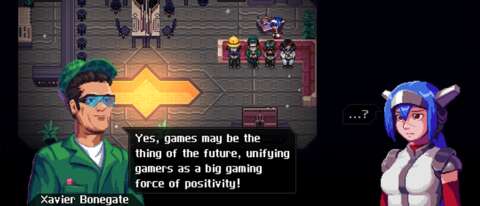
SOUND DESIGNS:
There are no voice-overs in the game, barring perhaps a certain sound clip that is audible when Lea is knocked out. (There is the “Quality Voice-overs” DLC, but this was an April’s Fool gag that have nonsensical gibberish being uttered.) Thusly, most conversations occur almost noiselessly.
As for sound effects, these are mainly for combat. The player can expect a lot of 16-bit era noises together with noises that are more recognizable, especially if the player has Lea using the higher-tier Combat Arts.
Few environments have sound assets that play when the player is exploring them. Fortunately, very obvious occurrences do have accompanying sound assets, such as the rush of water from waterfalls.
The music is the most prominent of the sound designs. Although CrossCode would be competing wth many other indies for having the most memorable sound tracks, its tracks are pleasing to my jaded ears. There are tracks for just about every region, though many places and scenarios share the same tracks. The most notably reused track is the one that is used for optional bosses.
SUMMARY:
The story of CrossCode can seem cross-eyed at times, especially the bits about CrossWorld being a physical place that is built onto a planet, which in turn is one among many that has been colonized. Throwing in plot elements like artificial intelligence makes it more difficult to follow.
Still, the interaction between the characters are the main draw of the story. Many characters, including the tertiary ones, benefited from witty writing.
Like the implementation of the story, the gameplay has flaws here and there, as well as missed expectations. Some gameplay mechanisms in CrossWorld does not apply to the actual gameplay of CrossCode, causing some disconnect. There are also poor visuals for discerning verticality.
Nonetheless, there are great parts in the gameplay. The combat is perhaps a surprisingly well-made component of the game. Most boss fights are interesting, requiring the player to recall lessons that have been imparted during the Temples. Speaking of which, almost all of these are satisfying to complete, especially since they do not suffer from the issue of vague verticality.
CrossCode may not be stellar, but its best parts do shine when they appear.

